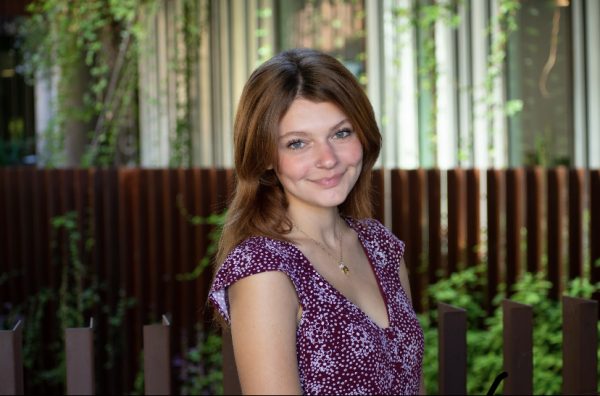Arizona Senator Mark Kelly visited the University of Arizona campus with the goal of observing various quantum computing and hypersonic research initiatives and programs at the UA on Friday, April 5. Kelly toured the university’s Meinel Optical Sciences building and the Aerospace and Mechanical Engineering building.
In recent years, researchers from both the James C. Wyant College of Optical Sciences and the UA Aerospace and Mechanical Engineering program have secured grant funding from the state and federal government to advance quantum computing and hypersonic research and technology.
Kelly voiced support for this research. “Funding is everything,” Kelly said. “There is not a dollar better spent than spent on education.”
Kelly began his visit at the Meinel Optical Sciences building to discuss quantum networks with Thomas Koch, dean of the Wyant College of Optical Sciences; Elliott Cheu, interim senior vice president of research and innovation at the UA; Matthew Eichenfield, SPIE endowed chair in optical sciences and Julie Emms, administrative director of the NSF-ERC Center for Quantum Networks.
Quantum networks are systems for transmitting information using the principles of quantum mechanics. Quantum networks play a crucial role in both quantum computing and quantum communication. Unlike classical networks, quantum networks can leverage qubits to enable the transfer of information between separate quantum processors.
The development of quantum networks has the potential to change how information is processed, the speed at which it is communicated and how secure it is.
Kelly spoke with UA President Dr. Robert C. Robbins, UA Dean of Engineering David W. Hahn and assistant professors of Aerospace and Mechanical Engineering Stuart Craig and James Threadgill about hypersonic wind tunnels.
Hypersonic wind tunnels are advanced testing facilities designed to simulate the extremely high speeds encountered by objects moving through the atmosphere at hypersonic speeds, typically above Mach 5 (five times the speed of sound). The UA has Mach 5 and Mach 4 wind tunnels.
These tunnels help to create conditions similar to those experienced during hypersonic flight, allowing researchers to study aerodynamics, heat transfer and other factors relevant to hypersonic design and performance.
Kelly witnessed firsthand the university’s efforts in these areas, which he said played a significant role in advancing workforce development, national security, education and innovation in research.
“It’s good to have basic research here. It creates jobs, whether that’s jobs here or jobs at companies like Raytheon [Technologies] and others around Tucson or Phoenix, but it also keeps us ahead of our adversaries,” Kelly said.
According to Kelly, this research also helps to create pathways that seamlessly integrate education with traditionally professional domains.
“The hope is that a lot of these students that we recruit here, that get degrees here, wind up working in companies locally,” Kelly said.
According to Kelly, this also allows students to be involved in “doing real research with real hardware.”
Follow the Daily Wildcat on Instagram and Twitter/X









